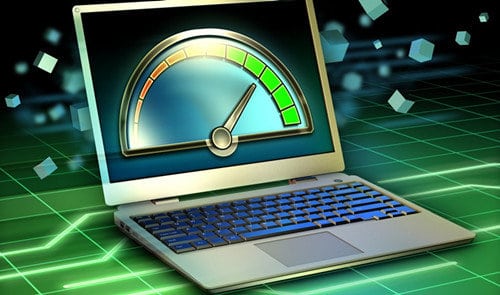
Computers slow down over time as they are used. The fact that the computer is outdated in terms of hardware is a separate factor.. Most of the time, the reason why it slows down is the operating system, which is filled with waste as you use it.. You can get rid of the accumulated junk and give your computer speed acceleration without the need to format.. Old computers have the latest hardware anyway, but there is no need to reduce the performance of the computer due to contamination of the Operating System.
Checklist for cleaning your Windows computer.
1. Remove Unused Programs
The first step on the path to a clean computer is to remove any old programs you no longer use. To see all installed programs on your computer, go to “Control Panel > Programs > Programs and features”. Scroll down the list and uninstall the programs you don’t need by clicking on the program and clicking the “Uninstall” button at the top or by right-clicking.
2. Antivirus
One of the most common causes of slow computers are viruses. Scan your computer using a full Scan, Deep Scan or similar options with the updated antivirus program you have. These scans take a long time, but you will get rid of harmful files and software.
You can also download and use the free version of Malwarebytes.. Its primary goal is to protect it from trojans, backends, adware and spyware rather than removing viruses.. If there is a lot of malware on your computer, many system files are likely to be deleted as well.
3. Disk Cleanup
Windows offers Disk Cleanup tool. It has been a part of the Windows operating system for years and is still at a great level for cleaning junk files and improving performance.
To run Disk Cleanup, click Control Panel> Administrative Tools> Disk Cleanup go to If you can’t see it in Administrative Tools, you’ll find it more comfortable if you set the display criteria “Small Icons” from the top right corner in the Control Panel.
Before running the scan, click Clean up system files. The application allows it to perform a more thorough scan by checking for old Windows Update files and log files.
In general, you can delete all the files that the scan finds.. Check the checkbox next to each result type and click OK. However, you will no longer be able to revert to the previous version of Windows when you choose to Clean up previous Windows installations using the Clean up system files option.
4. Defragment Your Hard Disk
The Windows 10 operating system performs disk defragmentation when it detects that it is needed. Your computer’s performance will increase if you defragment the disk, depending on the fact that you completely delete data every few months as the deletion process is performed from your computer.. In other Windows operating systems, you can find the “Defragment and Optimize Drives” tool by going to Control Panel > Administrative Tools. You can check how to Defragment Disk here
5. Clean Up the Startup List
The experienced Windows user knows that the Windows operating system lags behind MacOS, Chrome OS, and Linux in booting.
Often, the problem is caused by Windows that need to be started the first time Windows starts up. due to the number of programs. Most of them are unnecessary.
To clear your startup list, press Ctrl + Alt + Delete and select Task Manager. Click More Details in the new window, then select the “Startup” tab at the top of the screen.
Windows should now look for any applications running at boot. To disable an application, highlight the appropriate line and click Disable.
6. Cleaning the AppData Folder
When you uninstall an app, you will often find remnants of its former existence dotted around your machine. One of the most common locations is the AppData folder.
By default, the folder is hidden. You can find it by typing “%AppData%” into Windows search with “C:Users[Username]AppData” or “Windows + R”. “Roaming” folder will open when you go with search. Click “AppData” from the url to get to the AppData home directory.
The main folder has three subfolders: “Local, LocalLow and Roaming”. Check all three folders for traces of old software. Again, don’t delete anything unless you’re sure it’s safe.
7. Remove Old Program Files
The other place where you will often find remnants of old applications’ files is in the “Program Files” folder. Most computers have two “Program Files” folders. You can find them in “C:Program Files” and “C:Program Files (x86)”. As with the AppData folder, carefully work through the contents of each folder and delete files and folders that are no longer in use.
8. Cleaning the Registry
You’ve probably heard the horror stories about registry cleaners. Even the best-in-class CCleaner has a less subtle approach to cleaning up your registry junk.
However, keeping the registry reasonably tidy is essential.. Think of it as a library: the larger the library, the longer it will take you to find what you’re looking for. Similarly, the more junk in your registry, the longer it takes for Windows to find the entries it needs.
“Windows + R” Go to Windows search by typing “Regedit”. Then go to ComputerHKEY_LOCAL_MACHINESOFTWARE and ComputerHKEY_CURRENT_USERSoftware. In each folder, slowly work through the list and delete entries for software you no longer use.
Warning: Deleting the wrong registry entry can have serious consequences for your system. Make sure you have a full backup of your registry data before proceeding.. (Regedit can make a backup by clicking “data” from the “File” menu). You can restore the backup with “Get”.)